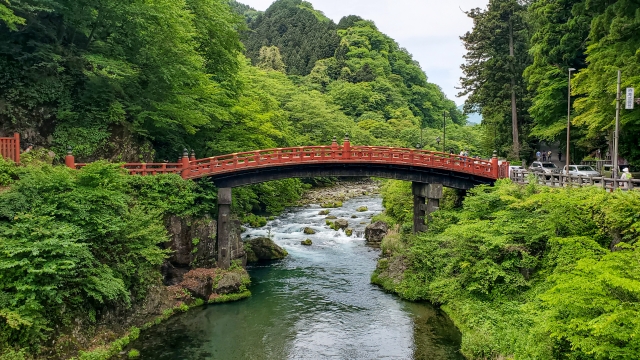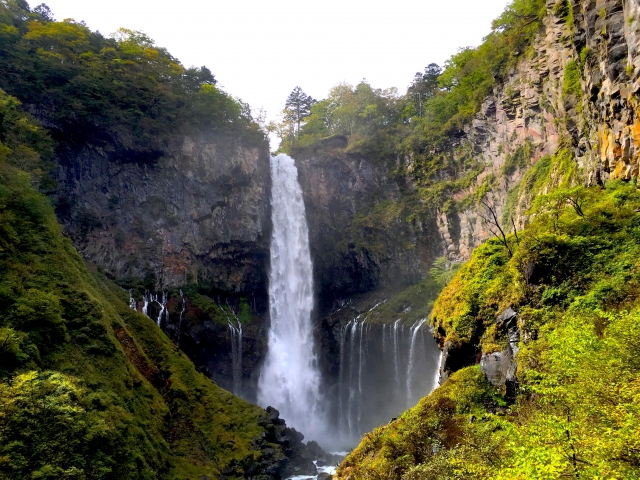Explore Japan’s picturesque countryside through our curated list of the 25 best rural destinations. From serene villages to breathtaking landscapes, immerse yourself in the tranquil beauty of Japan’s pastoral settings.
Shirakawa-go (Gifu Prefecture)

Shirakawa-go, located in Shirakawa Village, Ono District, Gifu Prefecture, is famous for its beautiful gassho-zukuri houses, a style that has earned it a place as a World Heritage Site.
This area offers an opportunity to experience a rural culture and lifestyle that symbolizes Japan’s pristine landscapes, with over 100 gassho-zukuri buildings still in use as residences.
Known for its breathtaking scenery in every season, Shirakawa-go is particularly renowned for its winter snowscapes.
The illumination events held from January to February are especially captivating, as they transform the snow-covered gassho-zukuri houses into a magical sight, drawing numerous tourists.
Special light-up tours are also organized during this time, adding to the enchantment of this picturesque village.
Tunoshima Ohashi Bridge (Yamaguchi Prefecture)

The Tunoshima Ohashi Bridge extends from Toyohama-cho in Shimonoseki City, Yamaguchi Prefecture, to Tsunoshima Island, spanning a total length of 1,780 meters.
Known for its beautiful scenery crossing the cobalt blue sea, the bridge is a popular spot for driving, cycling, and walking.
Particularly on clear summer days, the contrast of the blue sea, the white road, and the greenery of the island creates a stunning and perfect photo spot.
Takachiho Gorge (Miyazaki Prefecture)
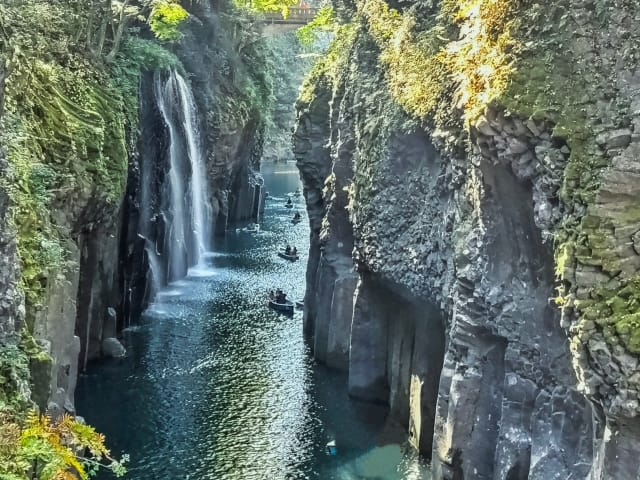
Takachiho Gorge, located in Miyazaki Prefecture, is a magnificent canyon that captivates many tourists with its beautiful natural scenery.
This gorge, stretching approximately 1.7 kilometers, was formed by the volcanic activity of Mount Aso and is characterized by its vertically sheer rock walls and emerald green waters.
The main attraction is the “Manai Falls,” a powerful and impressive waterfall that can be enjoyed both from a boat and on foot along the walking trails.
Okinoshima Island (Fukuoka Prefecture)
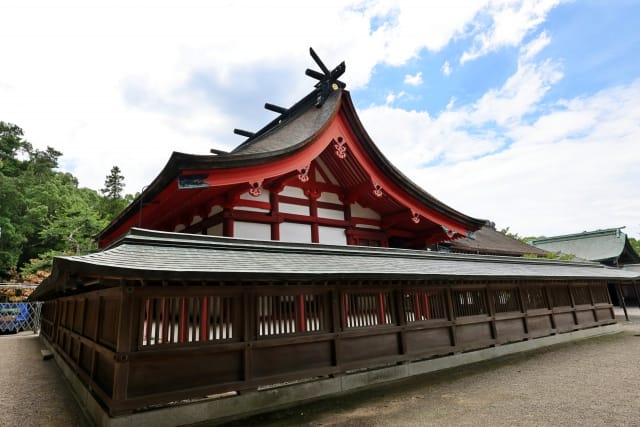
Okinoshima is a small island located about 60 kilometers off the coast of Kyushu mainland, belonging to Munakata City in Fukuoka Prefecture.
With a circumference of about 4 kilometers and a highest elevation of 243.6 meters, this island is known as the divine territory of Okitsu Miya of Munakata Taisha Shrine.
It was registered as a World Cultural Heritage site in 2017 as part of the “Island of the Gods” Munakata and Okinoshima and related heritage groups.
The entire island is considered the divine body of Okitsu Miya of Munakata Taisha Shrine, and a tradition of prohibiting women from entering is still upheld. Even for men, general public access is basically restricted, except during the local grand festival on May 27th annually, and the number is limited to about 200 people.
Since 2018, landing on the island for the general public, excluding researchers, has been completely prohibited. These strict regulations are in place to preserve the island’s sanctity.
Oze Marshland (Gunma and Fukushima Prefectures)
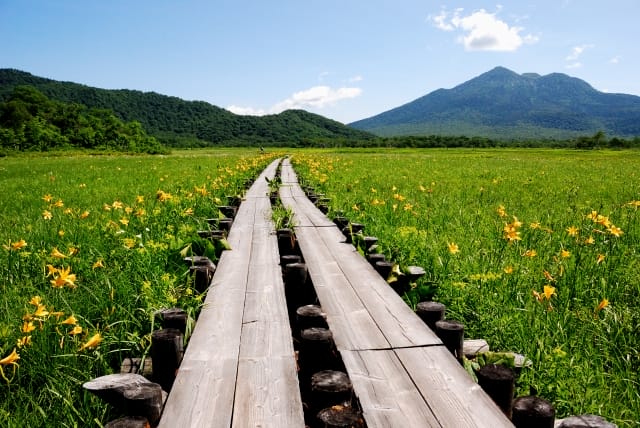
Oze Marshland, spanning Gunma and Fukushima Prefectures, is one of the largest high-altitude wetlands in Japan, boasting a natural environment rich with over 900 species of alpine plants.
From late May to November, the area comes alive with flowers like the Mizubasho and Nikko Kisuge, symbols of Oze.
Particularly in July, a variety of flowers bloom wildly, and during the autumn foliage season, the marshland’s grass turns red, creating a landscape known as “kusa-momiji” (grass foliage).
Mount Fuji (Shizuoka and Yamanashi Prefectures)
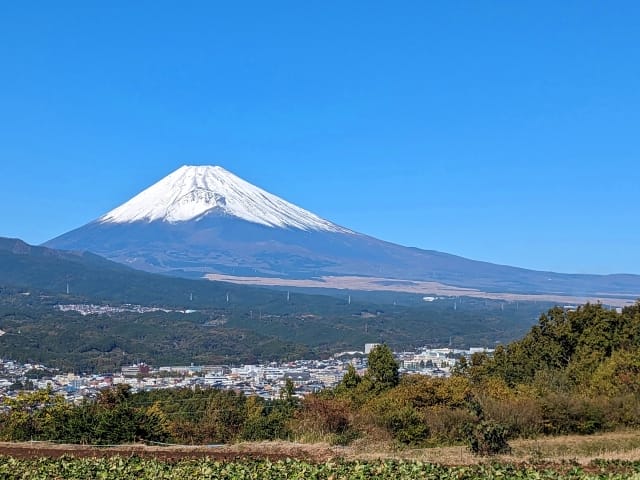
Mount Fuji, standing at 3,776 meters, is Japan’s highest peak and a stunningly beautiful stratovolcano. It took its current form about 10,000 years ago and has a history as an active volcano since the Heian period.
Culturally significant, it has inspired poetry, paintings, and novels, and is also a World Cultural Heritage site. The natural environment is diverse, characterized by unique topography and a rich ecosystem of plants and animals.
As a tourist destination, its elegant form has moved many people, continuing to inspire awe and admiration.
Yakushima Island (Kagoshima Prefecture)

Yakushima is a nature-rich island located about 60 km south-southwest of Kagoshima Prefecture. Covering an area of about 503 square kilometers, it has a population of approximately 14,000. Over 90% of the island is forested, with the highest peak in Kyushu, Miyanoura-dake (1,936 meters), at its center.
Yakushima is home to ancient cedar trees known as Yakusugi, unique and endangered species, forming a distinct ecosystem. This is due to the vertical distribution of vegetation from the coastal areas to the subalpine zone.
These characteristics led to its registration as a World Natural Heritage site in 1993. About 21% of the island is designated as a World Heritage area, most of which is national forest.
Shiretoko Peninsula (Hokkaido)
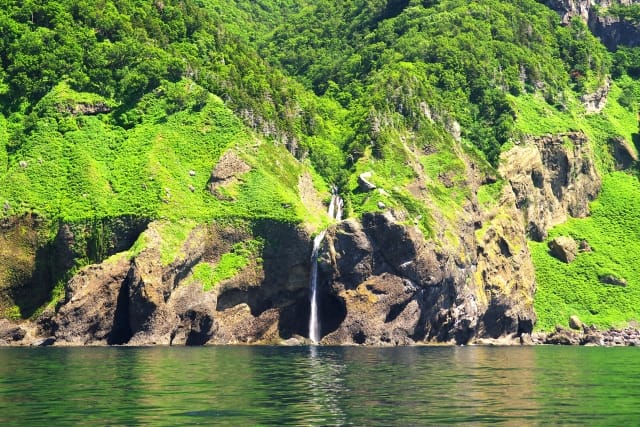
The Shiretoko Peninsula, located in the northeastern part of Hokkaido, is a nature-rich area registered as a World Natural Heritage site.
The region is characterized by closely interconnected marine and terrestrial ecosystems, influenced by sea ice and supported by virgin forests. The area of Shiretoko Peninsula covers 71,000 hectares, with 48,700 hectares of land and 22,300 hectares of sea.
Shiretoko is situated at the lowest latitude in the Northern Hemisphere for seasonal sea ice. The ice algae under the sea ice provide abundant nutrients, forming a rich food chain. On land, dwarf pine forests and alpine plants thrive, offering diverse vegetation.
The peninsula is home to flora from cold to subalpine zones, with 107 families and 872 species of vascular plants. This includes rare species such as Shiretoko Violet, Chishima Cock’s-foot, and Ezo Cotton Grass.
Takeda Castle Ruins (Hyogo Prefecture)
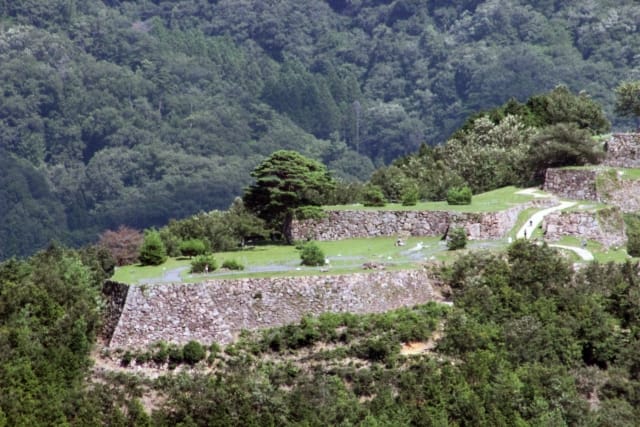
Takeda Castle Ruins, located in Asago City, Hyogo Prefecture, are historic ruins situated atop a mountain, famously known as the “Castle in the Sky” for their breathtaking beauty.
The site is particularly enchanting from autumn to early winter when it appears to float above a sea of clouds.
The Season for Sea of Clouds
The sea of clouds is primarily visible in the early mornings from September to November.
The conditions for the formation of this phenomenon include a chilly night before, a clear morning, a temperature difference of more than 10℃, little wind, and high humidity.
Following the World Heritage registration in 1993, restrictions were placed on logging, and by 2001, logging outside protected areas ceased. Today, only stumps from the past and trees felled by typhoons are used.
Kurobe Gorge (Toyama Prefecture)
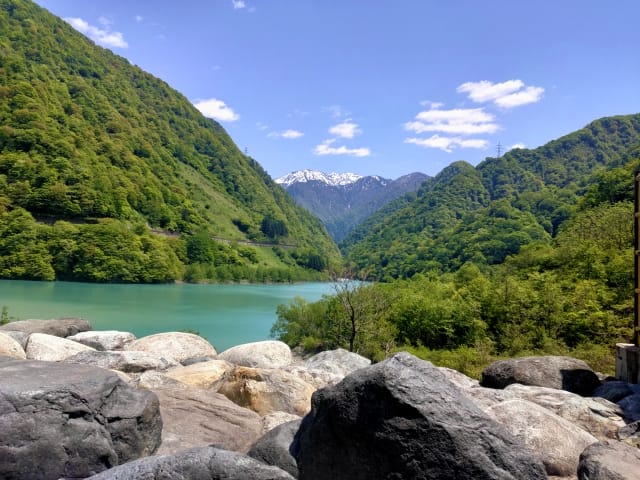
The Kurobe Gorge in Toyama Prefecture is known as one of Japan’s deepest V-shaped gorges. Designated as a Place of Scenic Beauty and a Natural Monument of Japan, it stands out for its majestic natural beauty.
A journey on the trolley train offers a full experience of the gorge’s charm, particularly during the fresh greenery of spring or the colorful autumn foliage.
From the train windows, passengers can enjoy a variety of views including the Shin-Yamabiko Bridge, Unazuki Lake, and the Shin-Yanagawara Power Station.
The surrounding area also boasts worthwhile spots to visit, such as Unazuki Onsen and the Kurobe River Electric Memorial Hall.
Kii Peninsula (Wakayama, Mie, Nara Prefectures)
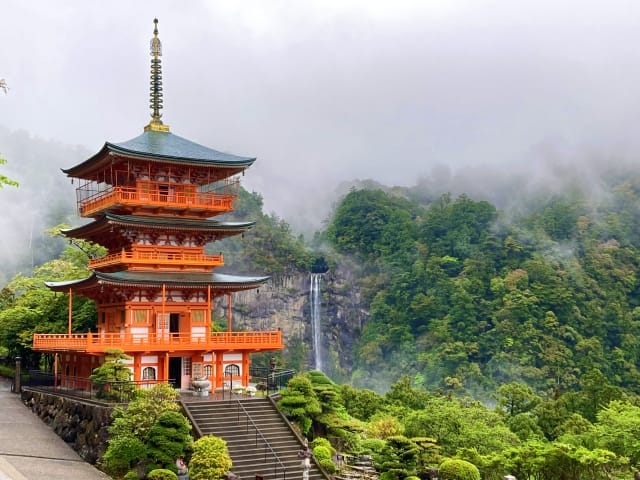
The Kii Peninsula, extending southwards into the Pacific Ocean from the central part of Honshu, is Japan’s largest peninsula. This region is known for its abundant nature, especially its beautiful coastline.
The peninsula doesn’t have a definitive boundary but includes parts of Mie, Nara, and Wakayama Prefectures. It is primarily made up of a ria coastline and is dotted with numerous natural parks and hot springs.
Mount Aso (Kumamoto Prefecture)

Mount Aso, an active volcano located in the Aso region of Kumamoto Prefecture, exhibits the characteristics of a complex volcano. Its highest peak is Takadake, reaching an elevation of 1,592 meters.
Particularly notable is Mount Aso’s caldera, measuring 25 km north to south and 18 km east to west, making it the second largest in Japan after Lake Kussharo.
Mount Aso consists of its caldera and central cones, with the Aso Five Peaks (Takadake, Nakadake, Nekodake, Eboshidake, and Kishimadake) being well-known.
The area was selected as one of Japan’s Geosites in 2007 and was certified as Aso Geopark, part of the Japan Geoparks and Global Geoparks Network, in 2009.
Kinkaku-ji (Kyoto Prefecture)
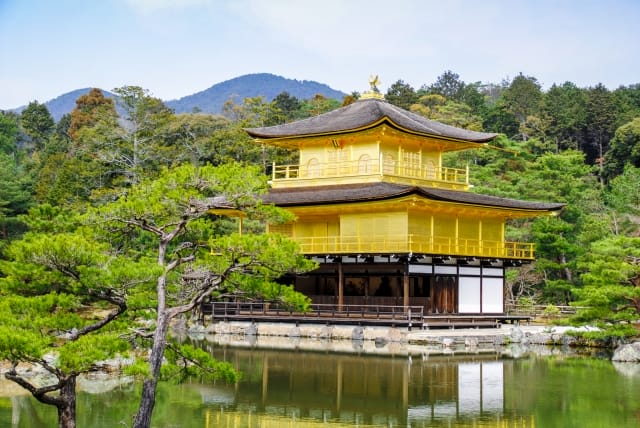
Kinkaku-ji (Rokuon-ji) is a temple of the Rinzai sect Shokoku-ji School, located in Kita-ku, Kyoto City. It’s especially famous for its beautiful Golden Pavilion (Kinkaku). The temple was founded in 1397 by the third shogun of the Muromachi shogunate, Ashikaga Yoshimitsu.
The Golden Pavilion was destroyed by arson in 1950 but was rebuilt in 1955, when the current gold leaf covering was applied. The restoration used 200,000 squares of gold leaf, each 10.8 cm on a side, amounting to 20 kilograms of gold, with a total cost of approximately 740 million yen.
The main attractions of Kinkaku-ji include, but are not limited to, the Shariden (reliquary hall). The three-story pavilion features different architectural styles on each floor.
The first floor is Hosui-in in shinden-zukuri style, the second is Chouondou in buke-zukuri style, and the third is Kukkyou-chou in a Chinese Zen-style buddhist hall. A golden phoenix shines atop the roof.
The temple’s garden is a pond-strolling style, beautifully arranged around the Mirror Pond.
Awaji Island (Hyogo Prefecture)
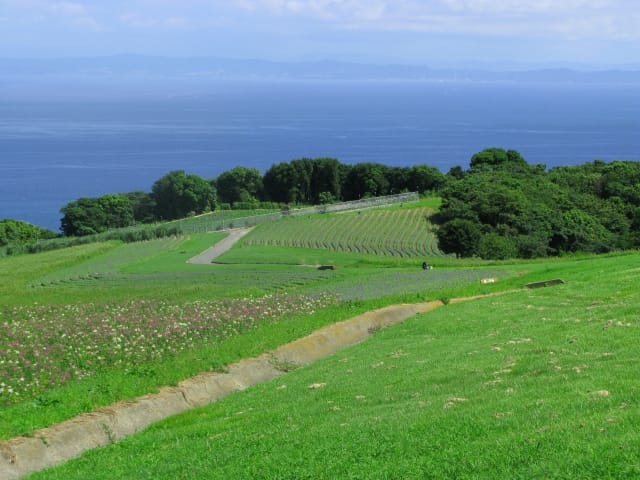
Awaji Island, located in Hyogo Prefecture, is a naturally rich island known for its beautiful sea, greenery, and charming flower fields.
The island is home to many attractive tourist spots and is blessed with nature throughout. Depending on the season, visitors can enjoy beautiful flower fields and vast green spaces.
In particular, a coastal drive offers a relaxing time while enjoying the beautiful scenery.
Lake Toya (Hokkaido)

Lake Toya, located in Hokkaido, is a popular tourist destination known for its magnificent natural scenery.
Not only is it celebrated for its natural beauty, but also for the variety of experiences it offers, providing unforgettable memories to its visitors.
Kirishima Mountain Range (Miyazaki and Kagoshima Prefectures)

The Kirishima Mountain Range, spanning Miyazaki and Kagoshima Prefectures in Kyushu, is a magnificent volcanic region. Designated as part of the Kirishima-Kinkowan National Park, it is not a single mountain but a group of mountains.
The Kirishima Range is one of Japan’s representative active volcanoes, known as a major volcanic belt with several concentrated volcanoes. The area includes many volcanoes, including Shinmoedake, which has attracted attention due to recent eruptions.
Nikko (Tochigi Prefecture)
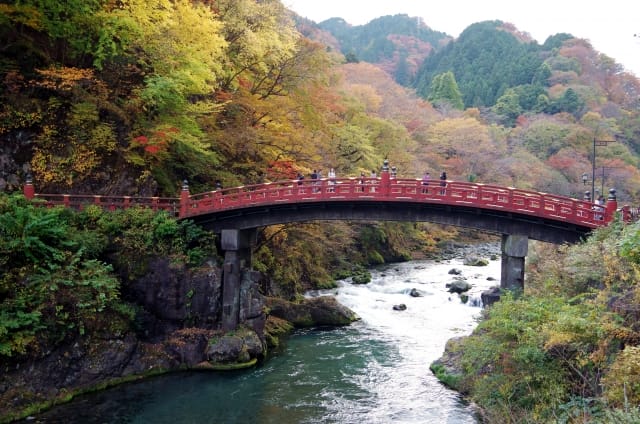
Nikko, located in Tochigi Prefecture, is a charming area where historical buildings and nature merge. The most famous tourist spot is Nikko Toshogu Shrine, known for its lavish shrine buildings dedicated to Tokugawa Ieyasu.
Additionally, the Rinnoji Temple’s Taiyuin Mausoleum, the resting place of the third Tokugawa shogun, Iemitsu, features sophisticated decorations.
Nikko is also distinguished by its natural beauty. Kegon Falls is one of Nikko’s iconic natural landscapes, offering a magnificent view of the waterfall.
Furthermore, the Nikko Futarasan Shrine, a key site in the Nikko mountain worship, has a history of over 1,200 years and is a registered World Heritage site.
The shrine’s beautiful bridge, Shinkyo, is a national cultural asset and considered the gateway to “the Shrines and Temples of Nikko.”
Yufuin (Oita Prefecture): A scenic hot spring resort.
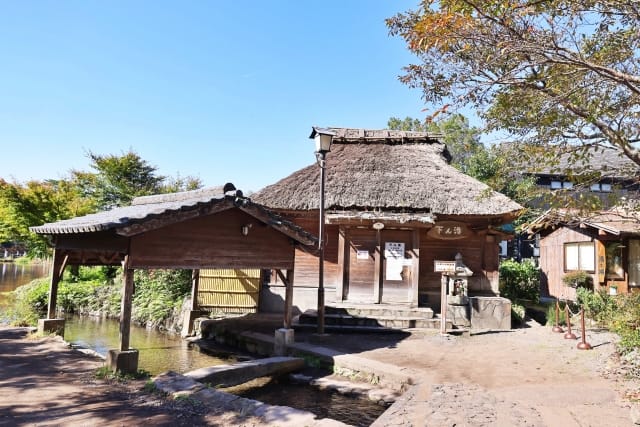
Yufuin Onsen, located in the Yufuin Basin near the central part of Oita Prefecture, is a picturesque hot spring area.
This spa is ranked very high in Japan in terms of discharge volume and number of spring sources.
The discharge volume of Yufuin Onsen is 38,600 liters per minute, boasting the second-largest volume in Japan. Additionally, it has about 900 spring sources, also ranking second nationwide.
The hot spring town has developed along Yufubin Street, leading from Yufuin Station to the hot spring area, and Yunotsubo Street, which leads to Lake Kinrin.
These streets are lined with stylish boutiques, restaurants, and scattered art museums. The accommodations are situated away from the bustling town, along riverbanks, amidst forests, or on hills, allowing for a spacious layout due to the abundant water supply, eliminating the need for inns to cluster in one area.
Thus, the town has a relaxed atmosphere, preserving a rural charm. There are no towering large-scale inns or hotels, nor are there neon-lit entertainment districts.
Amami Oshima (Kagoshima Prefecture)

Amami Oshima is a remote island located in the southern part of Kagoshima Prefecture, known for its beautiful seas, coral reefs, and abundant natural surroundings.
This island became the 34th national park in Japan, known as the “Amami Archipelago National Park,” in March of Heisei 29 (2017), and it was further recognized as a “World Natural Heritage Site” in July of Reiwa 3 (2021).
Amami Oshima is surrounded by emerald green coral reefs on all sides, and when you step ashore, you’ll find a subtropical forest filled with unique flora.
Amami Oshima also offers a distinct culture to explore. This includes island songs, black sugar shochu, and unique flora and fauna like the Amami rabbit that can only be found in this region. Moreover, there are also other remote islands nearby, such as Kakeromajima, Ukejima, and Yoroshima, which boast untouched natural beauty.
Amanohashidate (Kyoto Prefecture)
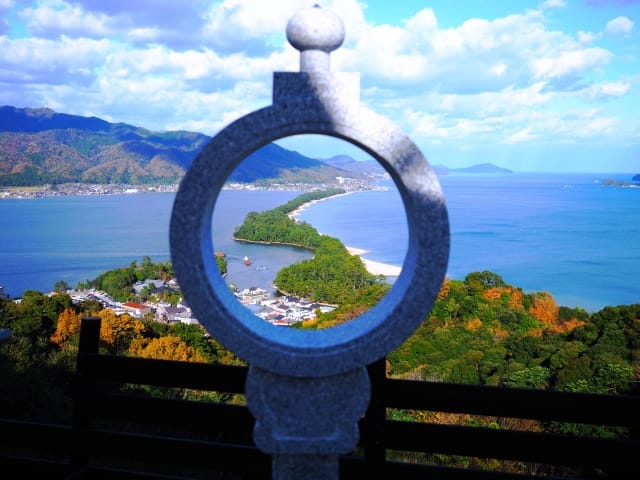
Amanohashidate is a stunning scenic spot located in Miyazu City, Kyoto Prefecture, and is counted among Japan’s Three Scenic Views. It features a unique landform, a sandbar stretching approximately 3.6 kilometers in length and ranging in width from 20 to 170 meters, densely covered with around 6,700 pine trees. This distinctive landform was shaped by nature over thousands of years, and the sandbar of Amanohashidate is divided into three areas: O-Tenshodai (Large Heavenly Bridge), Ko-Tenshodai (Small Heavenly Bridge), and Dai-Ni Ko-Tenshodai (Second Small Heavenly Bridge), separating Miyazu Bay from the Aso Sea. These two sea areas are barely connected by the Funadama Strait, and in the Funadama area, you can find places like Bunzudō and Chion-ji Temple.
Miyako Island (Okinawa Prefecture)
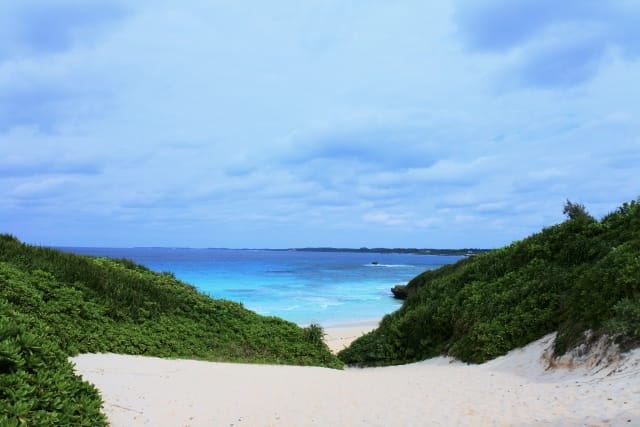
Miyako Island is a beautiful island located in Okinawa Prefecture, known for its crystal clear waters and stunning sandy beaches. Particularly distinctive is the emerald green sea referred to as “Miyako Blue,” which provides a rich natural landscape.
Miyako Island boasts several beaches, each with its unique charm, including Yonaha Maehama Beach, Painagama Beach, Sunayama Beach, Yoshino Coast, and Shimojishima Coast.
For example, Yonaha Maehama Beach is renowned for its easternmost beauty, featuring a 7-kilometer stretch of white sandy beach and transparent waters. It’s perfect for swimming and relaxing on the beach, and you can also enjoy activities like jet skiing and banana boat rides.
Sunayama Beach, on the other hand, features a natural rock arch, making its scenery truly breathtaking. Other options include Yoshino Coast, ideal for snorkeling, and Shimojishima Coast, where you can swim with sea turtles.
Shirakami-Sanchi (Aomori and Akita Prefectures): Pristine Forests and Clear Rivers.
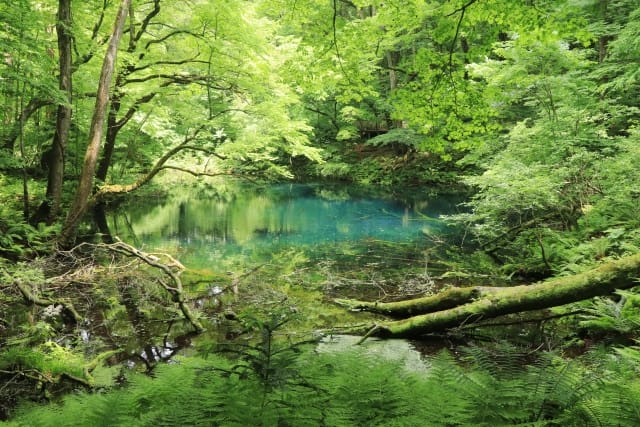
Shirakami-Sanchi is an expansive mountainous region spanning Aomori and Akita Prefectures, known for its pristine primeval beech forests. The total area covers approximately 130,000 hectares, with around 17,000 hectares of it being designated as a UNESCO World Heritage site. This area is primarily composed of granite geology, preserving landscapes from the Cretaceous period of the Mesozoic era.
Kobe (Hyogo Prefecture): Sophisticated Port City Night Views.

Regarding Kobe’s night views, I’ve found some fantastic spots where you can fully experience the charm of this sophisticated port city.
- Hachimaki Observation Deck: Located on the slopes of Mount Rokko, this popular night view spot offers a panoramic view of the colorful cityscape. You can enjoy breathtaking views here.
- Tenrandai: A classic night view viewing spot on Mount Rokko, known for being visited by Emperor Showa. It offers a magnificent night view that stretches from Osaka Plain to Wakayama. At the “TENRAN CAFE” on the mountaintop, you can savor dishes made with local ingredients.
- Rokko Garden Terrace: From the highest elevation viewpoint on Mount Rokko, you can enjoy a grand panorama from the Akashi Strait to Osaka Plain.
- Kobe Harborland: Located on the vibrant oceanside with sightseeing boats and a Ferris wheel, you can enjoy the illuminated night views of the harbor. It’s especially attractive as a photography spot.
- Meriken Park: You can enjoy the beautiful night views of Kobe Port, and they even provide tips for photography. There are many charming spots here, including the iconic Port Tower, which is a symbol of Kobe.
Ishigaki Island (Okinawa Prefecture): Beautiful Beaches and Nature-Rich Remote Island.
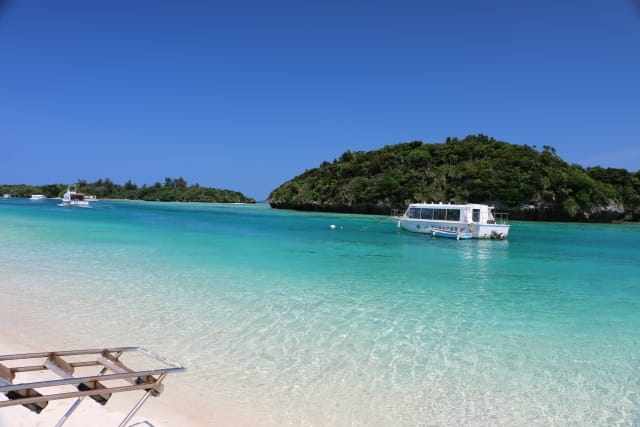
Ishigaki Island is a captivating place known for its beautiful beaches and abundant natural scenery. Here are some recommended spots and activities:
- Maesato Beach: Located within the ANA InterContinental Ishigaki Resort, this beach features white sandy shores and crystal-clear waters. There are plenty of marine activities available, and the facilities are well-equipped, making it easy for visitors to enjoy.
- Fusaki Beach: A natural beach in the western part of Ishigaki Island, known for its stunning transparency where sea turtles come to lay their eggs. You can also enjoy snorkeling tours and sunset views here.
- Kabira Bay: A famous scenic spot chosen as one of Japan’s top 100 landscapes, characterized by its high transparency emerald green sea. Swimming is prohibited, but you can enjoy the beauty of the sea from a glass-bottom boat.
- Blue Cave: Located about 20 minutes by kayak from Yonehara Beach, it’s a beautiful cave where sunlight reflects off the white sandy seabed, creating a sparkling sight. Colorful tropical fish can also be seen around the cave.
- Higashihennazaki Lighthouse and Tamatorizaki Observation Point: These are scenic spots at the northern and southern ends of Ishigaki Island, respectively. Higashihennazaki Lighthouse is especially known for its beautiful sunsets, while from Tamatorizaki Observation Point, you can enjoy panoramic views of Higashihennazaki Peninsula and the sea around Ishigaki Island.


